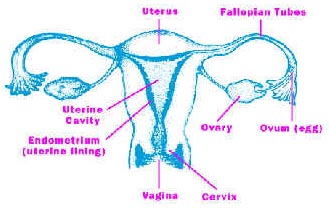Colposcopy
Colposcopy is a procedure that uses a special microscope (called a colposcope) to look into the vagina and to look very closely at the cervix (the opening to the uterus, or womb).

Image Source: U.S. Food and Drug Administration
The colposcope magnifies, or enlarges, the image of the outer portion of the cervix. It is somewhat like looking through a pair of binoculars. This allows the doctor to see the outer portion of the cervix better. Sometimes a small sample of tissue (called a biopsy) is taken for further study. The tissue samples help the doctor to figure out how to treat any problems found. If cancer of the cervix is found early, or a precancerous change of cells is found, it can be treated and almost always can be cured. Also, for precancers and early cancers of the cervix, sometimes removal of part of the cervix may be the only treatment needed.
Why would a woman need a colposcopy?
Colposcopy is usually done when a woman has an abnormal Pap test. (Pap tests are done on a regular basis to screen for cancer of the cervix and other problems.) Other reasons a woman may need a colposcopy is when, during a pelvic examination, the cervix, vagina, or vulva ("lips," or opening to the vagina) look abnormal to the doctor.
Procedure
When you have a colposcopy, you will lie on an examination table just like you do when you have a regular pelvic examination. The doctor uses an instrument called a speculum to spread the walls of the vagina apart. The doctor then places the colposcope, which is like a microscope with a light on the end, at the opening of the vagina. The colposcope does not enter the vagina. The doctor will look inside the vagina to locate any problem areas on the cervix (opening to the uterus or womb) or in the vagina. If any areas are of concern, the doctor may take a small tissue sample (called a biopsy). When this is done, you may feel a slight pinch or cramp. The tissue is then sent to a lab for further study.
Post procedure
Dr Majid Rasekhi will talk with you about what he saw inside your vagina and cervix. If a sample of tissue was taken from your cervix (biopsy), the lab results should be ready in 2 to 3 weeks.
Most women feel fine after a colposcopy. You may feel a little lightheaded and if you had a biopsy, you may have some light bleeding. Talk to Dr Majid Rasekhi about how to take care of yourself after the procedure and when you need to return for a checkup.
Risks of colposcopy
There is a very small risk of infection when you have a colposcopy. You may have mild pain and cramping during the procedure and light bleeding afterwards. This most often happens when a biopsy (a small sample of tissue taken from the cervix) is done. If you have heavy bleeding, a fever, or severe pain after the procedure, you should contact Dr Majid Rasekhi right away. |